
Background information
Cannabis grow setup – Marty’s grow report, chapter 1
by Martin Jud

It’s quintuplets! Five female cannabis plants see the light of my tent. One of them is born with a deformity. The other four are doing great. Chapter 2 reveals the first photos of my girls and how they made it this far.
The marijuana harvest is still a while away. About two months, I’d say. But the seed has been sown. Just in time for the weekend, on Friday evening around 4:20, my legal seedlings poke their heads through the soil.
Unfortunately, one of the five females is not doing too well.
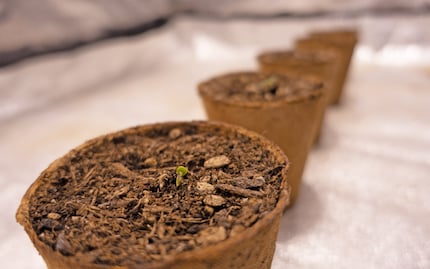
Number one is a little deformed. This means I’ll be giving it an extra helping of love.
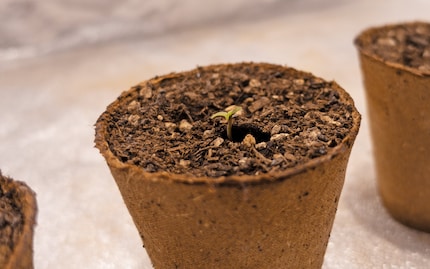
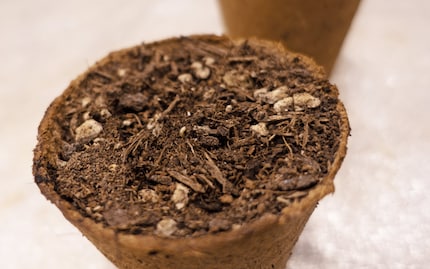
Number two looks very healthy. Number three is only visible when I look really closely.
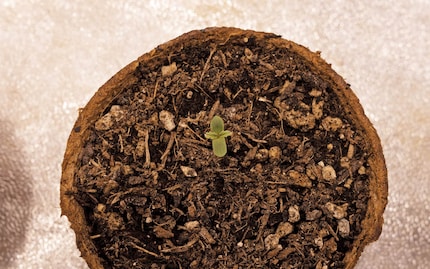
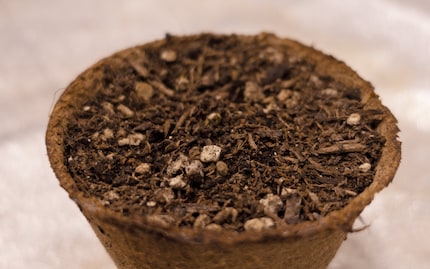
The same goes for four and five. One of them still has quite a bit of stretching to do.
Look at those cuties. These ladies belong to the cannabis variety Mota CBD Rich Auto by LaMota Seeds. Why do they have the word «auto» in their name, you might be wondering? Why not, let’s say, moped? I’ll get back to that later. But I’ll give away this much for now: the final product, according to the manufacturer, will contain up to 15 per cent CBD and 0.6 per cent THC.
Find out more about my grower setup in the following article. After that, we’ll be looking at the right earth and how to plant the seeds.
Hemp isn’t particularly picky when it comes to earth. Some growers cultivate their plants in a mixture of soil and coconut substrate, others work with hydroponic cultivation involving rock wool or expanded clay. I’m using Ricoter citrus plant soil. Not because I’m a huge fan of oranges, but because this type of soil has a PH value of 6.5. And also because it’s worked well for me in the past.
For a cannabis plant to be able to absorb the nutrients and minerals in the soil, the soil should neither be too acidic nor to alkaline. So don’t annoy it and make sure the PH value stays between 6 and 7. In my case, this is easy. Why? Because my tap water is slightly alkaline – probably because of a good dose of lime from the Jura mountains in the area. This helps keep the acidity of the soil in check. Provided I don’t mess up the fertilising, that is. If the PH value is too low or too high, the plant won’t be able to absorb enough nutrients or none at all. Not even if there are plenty in the soil.
In general, it’s important to shield your plants from any stress right from the start. I’ve managed to do this for the most part. I averted the first major stress factor of repotting the plants by using pots made of natural materials (by Windhager). The wood fibre and peat they’re made of are asy for the roots to penetrate. What’s more, the entire pot is easily repotted together with the rest of the plant.
Before you plant your seeds, put some earth loosely into the pots before pressing it down gently. Normally, it’s best to use low-nutrient potting soil. But I’m not going to. Because... Hm, not sure. Why don’t I just let the seeds germinate before putting them into the soil? Other growers do that, after all. Erm... Probably because my way has always worked well for me in the past.
Be as it may, what you do next is poke a one- to two-centimetre deep hole into the earth. Your little finger is perfect for the job. Drop your seed in, cover the hole and reach for your watering can. Now gently pour water onto the earth and wait a few seconds between each small swig. What you want to achieve here is for the wall of the pot to be drenched. As a rule of thumb, I stop watering when about half the pot has turned dark. Next, I sit back and watch the lighter areas slowly grow dark as they soak up the water.
What’s key now is that the little pots stay moist until the seeds germinate. Wait for the earth to be almost completely dry until watering again.
As soon as you see a plant sticking out of the soil, it needs to be moved to a source of light.
Until recently, hemp had been an integral part of everyday life for thousands of years. This was before the world’s major cotton producers started to cultivate huge fields. And before the pharmaceutical lobby turned against the herb. In fact, quite a few others were involved in demonising cannabis. However, I’m not about to give you a history lesson. In a nutshell, people no longer wanted hemp, because it was reducing the profits of other areas of business. So all of a sudden, cannabis, with its ingredients that can activate humans’ endocannabinoid system, was no longer wanted. Neither as a painkiller, nor as a cough syrup, and most certainly not as insulation material for houses. That was left to asbestos.

The 19th-century cough syrup pictured above contains, ahem, cannabis among other things. Cannabis Indica, to be precise.
When pharmacists, growers, stoners or other consumers say Indica or Sativa, they’re referring to a variety or subvariety. We’re talking about different cannabis genes, each of which has thousands of subspecies. These, in turn, differ in terms of growth, size, flavour and effect. In botany, there’s no consensus on whether Indica is a separate species or a subspecies of Sativa. What is clear, however, is that there are many different types. If you’re using weed as a stimulant, the most important types are Sativa, Indica and Ruderalis.
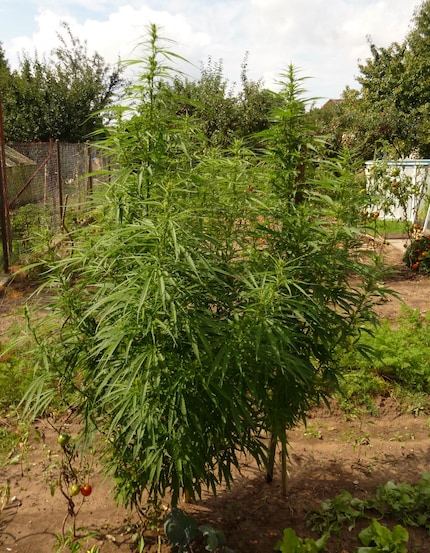
Cannabis Sativa is a variety that would be native to Switzerland, were it still to grow in the wild. A pure Sativa can grow into a very tall plant. Depending on the variety, it can reach up to three or four metres. On rare occasions even more. In contrast, Indica hemp is bushy and usually grows up to one and a half metres. As the name suggests, Indica varieties naturally grow closer to the equator.
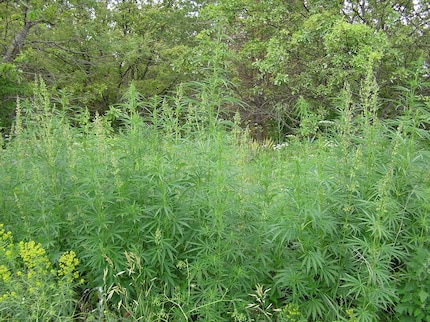
Cannabis Ruderalis, the third type of our trio, is naturally low in THC but relatively high in CBD compared to Indica and Sativa. What’s more, this low-growing, tiny variety that occurs in thousands of subspecies. It grows miles away from the equator in the far north. We’re talking midnight sun and polar nights. That’s how far north. What’s important to know is that Sativa and Indica are guided by the sun when it comes to flowering. One factor is the sun’s colour spectrum, the other is the length of the day. The northern Ruderalis is a peculiarity in this department. Unlike its relatives, it doesn’t depend on the length of the day nor on the colour spectrum of light to bloom. It blooms automatically.
If you’re buying a cannabis strain that has the addition auto or autoflowering, it means that part of its genetics are derived from a Ruderalis plant. I’m growing Mota CBD Rich Auto.
The genotype of the Mota CBD Rich Auto cannabis strain is about two-thirds Indica and one third Sativa. An unknown proportion, which probably accounts for less than five per cent of the genetics, stems from a Ruderalis.
If my plant didn’t have the Ruderalis genes, I’d have to simulate the seasons. This would involve shining light on the plants for 18 hours a day during the first phase. A light with a higher proportion of blue than our autumn sun. This light promotes growth in the vegetation phase. The plant won’t bloom unless the exposure to light is changed. Normally, I give an indoor plant 30 days for its vegetation phase before sending it off to flower. If I’m cultivating a variety that’s too big for my tent, I can influence its final size by introducing the flowering stage earlier. Should the plants still grow too tall, you can carefully bend the stems around a pencil and tie them down.
Indica and Sativa go into bloom when you reduce the light exposure from 18 to 12 hours. This involves using a different bulb. The change simulates late summer or early autumn. A sodium vapour lamp with a higher proportion of red light is put to use.
But what about the Ruderalis? Less than five per cent of Ruderalis is all it takes to change the genetic material in a way that makes practically pure Indica or Sativa plants flower regardless of light exposure. More simply put, you don’t need to reduce the light from 18 to 12 hours. Just stick to your 18 hours and your yield should increase. Thanks to the Ruderalis genome, the plant is slightly smaller but flowers more quickly and can be harvested much earlier, both indoors and outdoors.
I’ve been exposing my plants to 18 hours of light a day since day one. By the way, my plants are feminised. This means only female cannabis develops from them. After all, only female plants grow flowers, which is the aim of this grow.
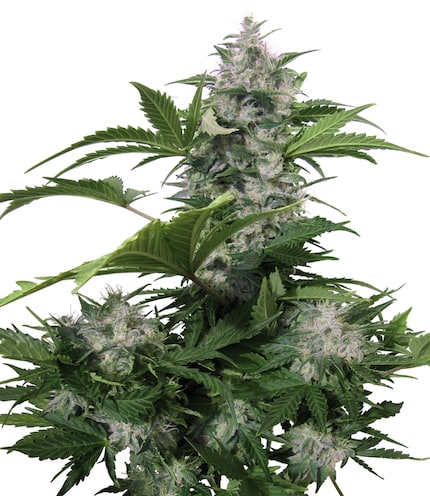
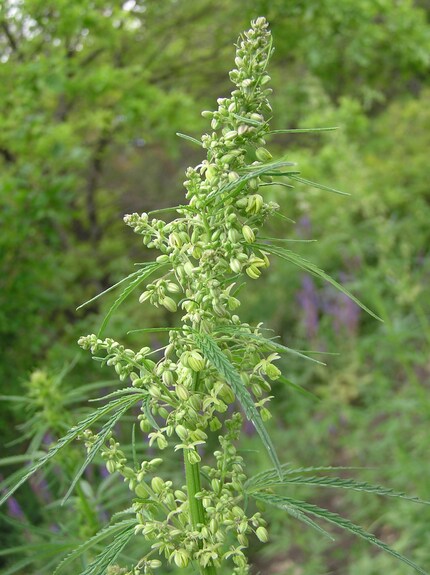
Male cannabis produces small pouches. They look like tiny testicles and eventually burst open. Once their pollen reaches a female, the latter will immediately start producing seeds. The flowers only look consumable at first glance. But instead of CBD and THC, you’re looking at dozens, if not hundreds of tightly packed seeds. That’s why I prefer to go for feminised seeds.
I’ve decided to change the light source at a later stage to simulate the autumn sun. However, without reducing the exposure time. For the current vegetation phase, I’m using a 400-watt Philips bulb called HPI-T Plus.
On Saturday, the wait is over. All seedlings have stuck their heads out of the soil. Now I know for certain that only one of them is a bit wonky. The others are all well and appear to be developing normally.
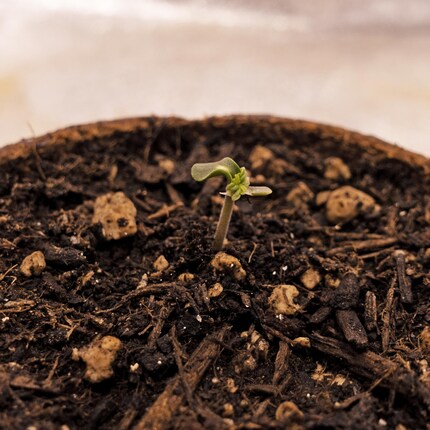
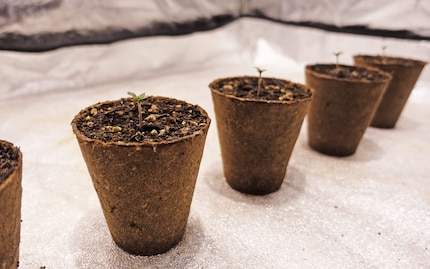
To avoid drowning my plants, I only water them when the pots are almost dry. Water can leave lime stains on the leaves, so I try to pour water straight onto the soil. I’ll also avoid over-fertilising them. This means no fertiliser for the first 30 days. After all, the soil I bought should contain nutrients to see them through that first month. How come? The soil has already been fertilised.
From Sunday to Tuesday, my Mota plants are growing slowly but surely. I’m still a bit worried about the first plant, though. But I’ve decided to stay positive and not give up on her.
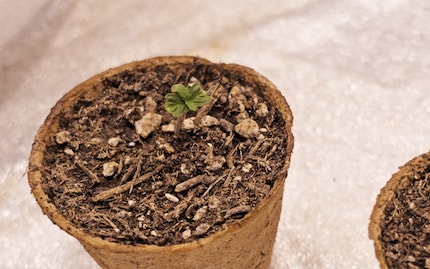
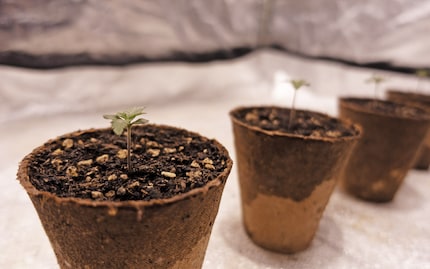
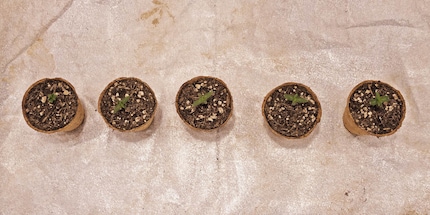
Wow, aren’t they just great? This canna be a sin, right?
I find my muse in everything. When I don’t, I draw inspiration from daydreaming. After all, if you dream, you don’t sleep through life.
Interesting facts about products, behind-the-scenes looks at manufacturers and deep-dives on interesting people.
Show all